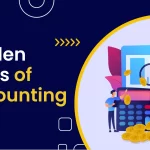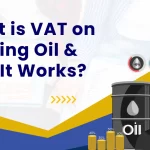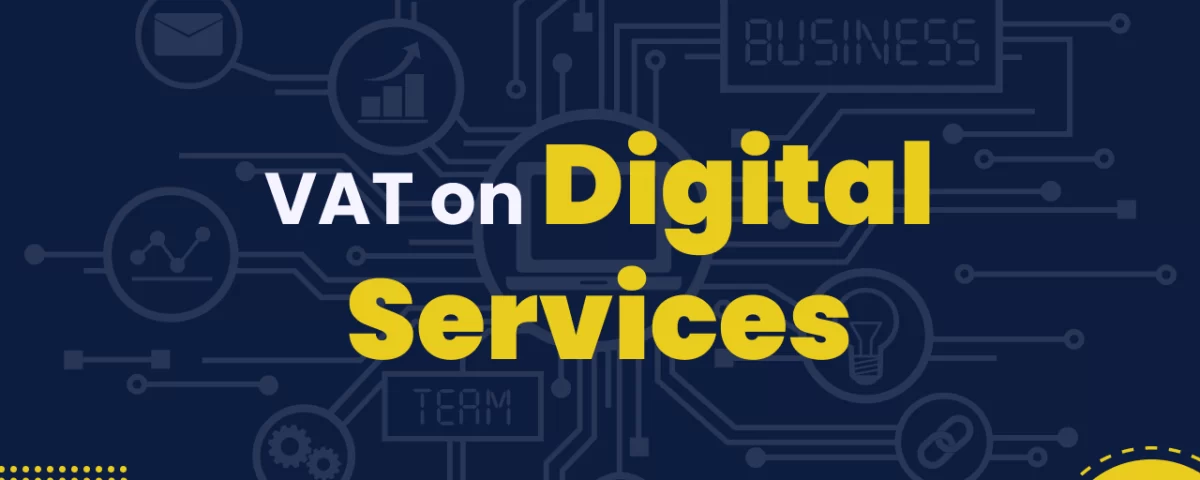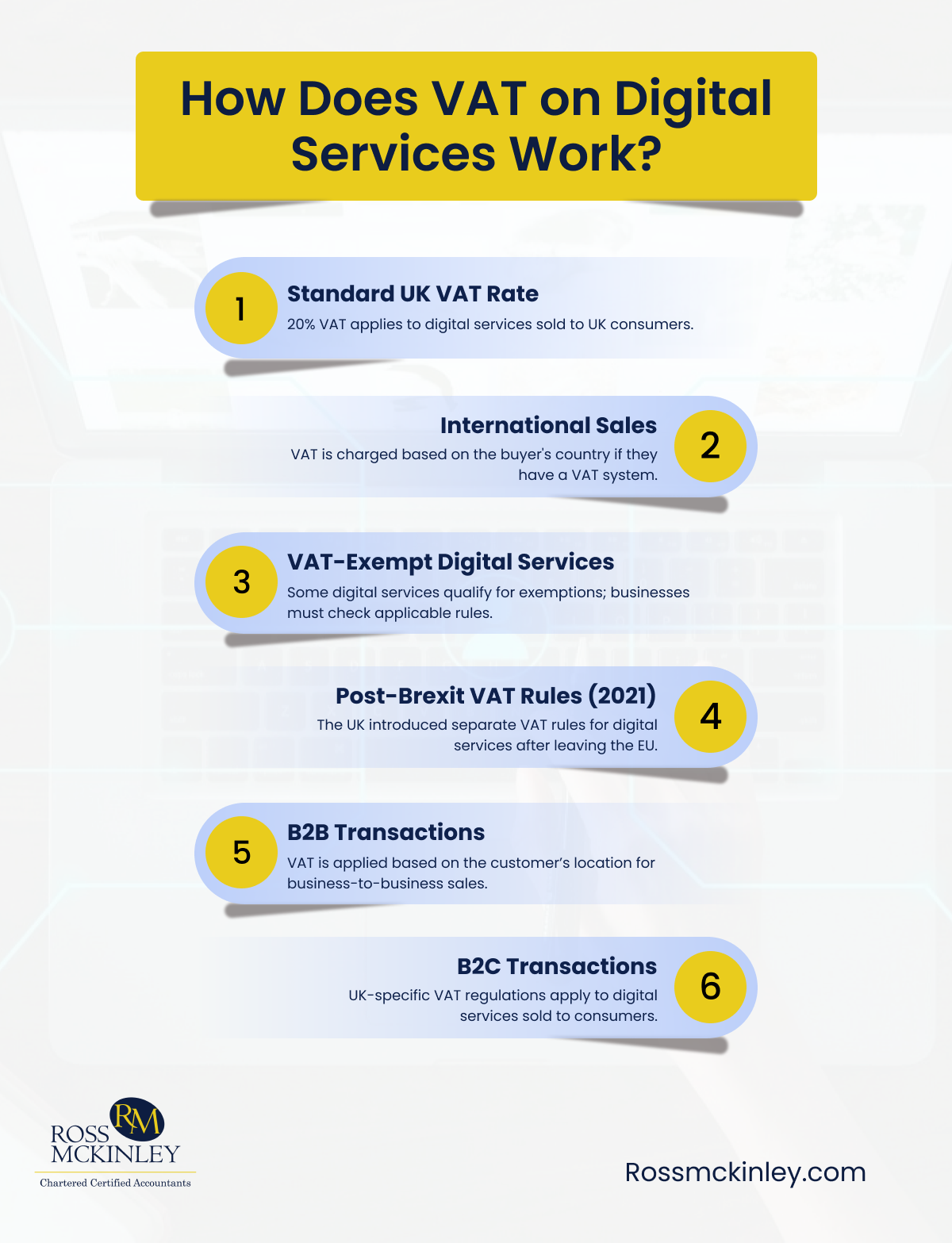
Golden Rules of Accounting
May 2, 2025
VAT on Heating Oil: How It Works?
May 4, 2025VAT on Digital Services: A Complete Guide

Imagine running an online business and facing unexpected VAT charges in different countries. Confusing, right? Understanding VAT on digital services is mandatory to avoid costly mistakes and ensure compliance.
If you sell to customers abroad, the VAT you pay depends on their location. Some regions require VAT registration, even if your business is elsewhere.
This blog will break down VAT and how it works so you can figure it out according to your customer’s location.

Table of Contents
What Is VAT on Digital Services?
VAT is a tax system that requires businesses to register and get a VAT number. It applies to sales and services in B2B and B2C transactions. Businesses must calculate VAT on transactions and pay the required amount to the government.
VAT on digital services is a tax for online products like e-books, software, and streaming services. The tax rate depends on the buyer’s location and applicable VAT laws.
What Are Considered Digital Services?
Not everything sold online qualifies as a digital service. Simply using the internet for communication or sales does not mean a business provides digital services.
To understand VAT on digital services, have a look at the distinct features explained in the table below:
| Digital Service | Not a Digital Service |
| Links to digital content or downloads sent automatically | Custom digital content like reports or medical results |
| Automatic emails with downloadable PDF documents | Live webinars with real-time interaction |
| Pre-recorded online courses with downloadable PDFs | PDFs manually emailed by the seller |
| Stock photos available for instant download | Online courses with pre-recorded videos but tutor support |
How Does VAT on Digital Services Work?
The standard 20% UK VAT applies to digital services sold to UK consumers. If the buyer is in another country with a VAT system, their local rate applies. However, some digital services fall under VAT-exempt categories, so businesses must check applicable rules.
After Brexit, the UK introduced separate VAT rules for digital services in January 2021. B2B transactions remain VAT-taxable based on the customer’s location. Meanwhile, B2C transactions follow UK-specific regulations, requiring businesses to determine the correct VAT treatment.
UK VAT rules for digital services also affect some businesses classified as B2C for tax purposes. Companies must ensure compliance by understanding whether their transactions fall under business or consumer sales.
Getting Help From an Expert
Handling Value-Added Tax on digital services can be complex, especially with international sales. Ross McKinley provides expert VAT guidance, helping businesses comply with tax laws and avoid compliance mistakes.
With 46+ years of experience, Ross McKinley assists businesses in managing VAT across multiple countries. Whether you need help with VAT registration, tax reporting, or understanding exemptions, our services provide reliable solutions.
How Can You Identify Your Customer’s Location?
For cross-border digital services from the UK, VAT for digital services applies based on the customer’s residence. If a B2C customer lives in another country, VAT is charged according to that country’s tax rules. However, in some cases, businesses can use place-of-supply regulations to determine the correct VAT jurisdiction.
According to UK regulations, VAT is charged based on how the service is provided. If a digital service is used in a telephone box, cafe, or hotel lobby, VAT applies where that location exists. Similarly, VAT on transport follows the place of departure.
For landline-based services, VAT is charged where the landline is registered. VAT depends on the SIM card’s country code if a mobile phone is used. Satellite TV services, however, follow the postal address where you send the decoder or viewing card.
Supply Rules Specific to Place of Location
VAT on digital services in UK applies when businesses supply digital services to UK consumers. However, if UK-based businesses sell digital services to consumers in other countries, VAT is charged based on the tax rules of that specific country. The EU and other VAT jurisdictions have tax regulations that businesses must follow.
From January 1, 2025, the European Council will introduce new VAT rules for small businesses. These rules will set a maximum VAT exemption threshold of €85,000 in annual turnover. Additionally, they aim to simplify VAT compliance for EU-based small businesses, making tax filing easier.
The VAT Mini One Stop Shop (MOSS) scheme may be an option for UK businesses selling digital services in the EU. Small businesses without an EU branch can qualify, allowing them to register for VAT, file returns, and pay tax in one EU country instead of multiple jurisdictions.
Countries With Digital Services Tax (DST)
Many OECD countries have a Digital Services Tax (DST), which may be phased out by June 2024. The new Pillar One rule will replace DST, ensuring income tax is paid where customers are located. Countries with DST include the United Kingdom, Austria, France, Italy, Spain, Tunisia, and Turkey. India applies an Equalisation Levy on online ads and e-commerce, similar to a DST.
Apart from VAT on Digital Services to businesses, the UK introduced a Digital Services Tax (DST) in April 2020. This interim tax applies a 2% turnover rate on large digital businesses with revenues exceeding £500 million, of which £25 million comes from UK users.
Conclusion
VAT on Digital Services can seem complex, but understanding how it works makes handling easier. Businesses must consider customer location and service type to determine the correct VAT rates.
For smoother operations, always verify the place of supply rules and stay updated with changes in VAT regulations. Using tools like the MOSS scheme can save time when dealing with cross-border transactions.
If unsure, contacting a VAT expert can help ensure your business complies with the latest rules. Getting it right can make your international sales much simpler and more efficient.
